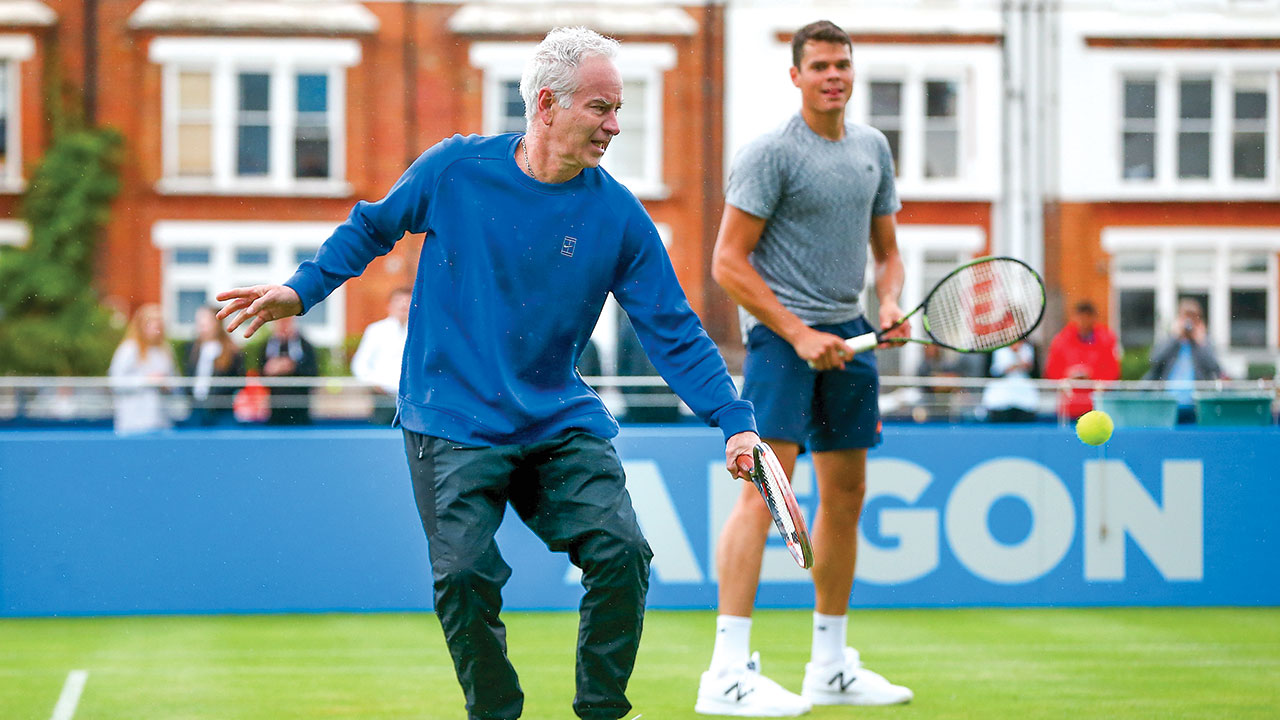Now sitting in an air-conditioned suite that overlooks centre court at Aviva Centre, dressed in non-sweaty New Balance gear, Raonic’s dark eyebrows go skyward when he thinks about how many people work for him. “Two, five, eight, 10,” he says, before landing at the answer: “Thirteen people have a say in the decisions I make.”
Each has a specific role. Tennis-wise, McEnroe has improved his net game and taught him to play with more emotion, though Raonic says McEnroe-level outbursts at umpires–“Answer the question, jerk!”—aren’t coming anytime soon. “I think we have a very different way of going about it,” he says, laughing. Moya, he says, has made him more decisive on court and improved his mental game. “He’s taught me to be more relaxed between matches, to not overthink things.” It’s Piatti he spends the most time with. Raonic says Piatti has “improved the foundation of my game.”
And then there is Sirola, Raonic’s Croatian-born fitness trainer whose usual day runs from 6 a.m. to 9 p.m. Sirola still calls Croatia home, though he travels 250 days a year with the Canadian. “This is a family,” he says. In three years, he has helped transform Raonic’s body. Those lumbering legs are punctuated by massive calves. On Raonic’s comparatively small torso, there is no evidence of anything even resembling excess. That he is a better athlete today is something Sirola can prove. Raonic wears a GPS device during practice that tracks everything—how fast he’s jumping, how quickly he changes direction, his power output, you name it. In every category, the trainer says, “he’s 30 to 40 percent better than in 2013.”
And if you ask Sirola, who is also made of brick, there is room for his client to improve. They’ve yet to find Raonic’s maximum capacity, though Sirola thinks they’re close. He sees potential in the areas of speed and reactivity on the court, and in the quick changes in direction that are key when the six-foot-five Raonic faces smaller opponents.
That’s also the biggest challenge: Raonic’s size, power and long arms are incredible assets and contribute to a 155-mph serve that’s the envy of most on the Tour, but his build is “not optimally perfect” for tennis in Sirola’s eyes. “Maybe a little bit too long in the legs. It’s not helping him to move efficiently on the court. But that’s my part: I need to move those legs faster, I need to work hard on it.” Make Raonic’s legs move faster—that’s a specific task, but Raonic does say everyone on his team was brought in for a reason. Sirola has narrowed in on his goal.






